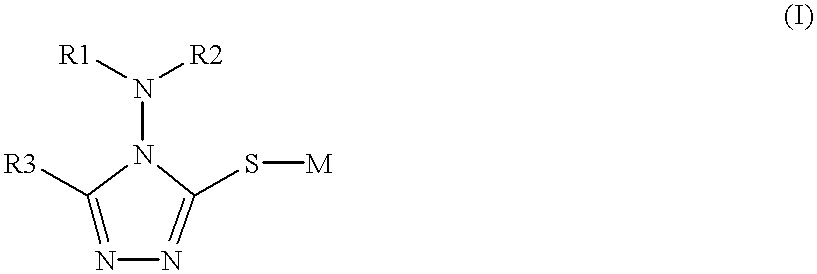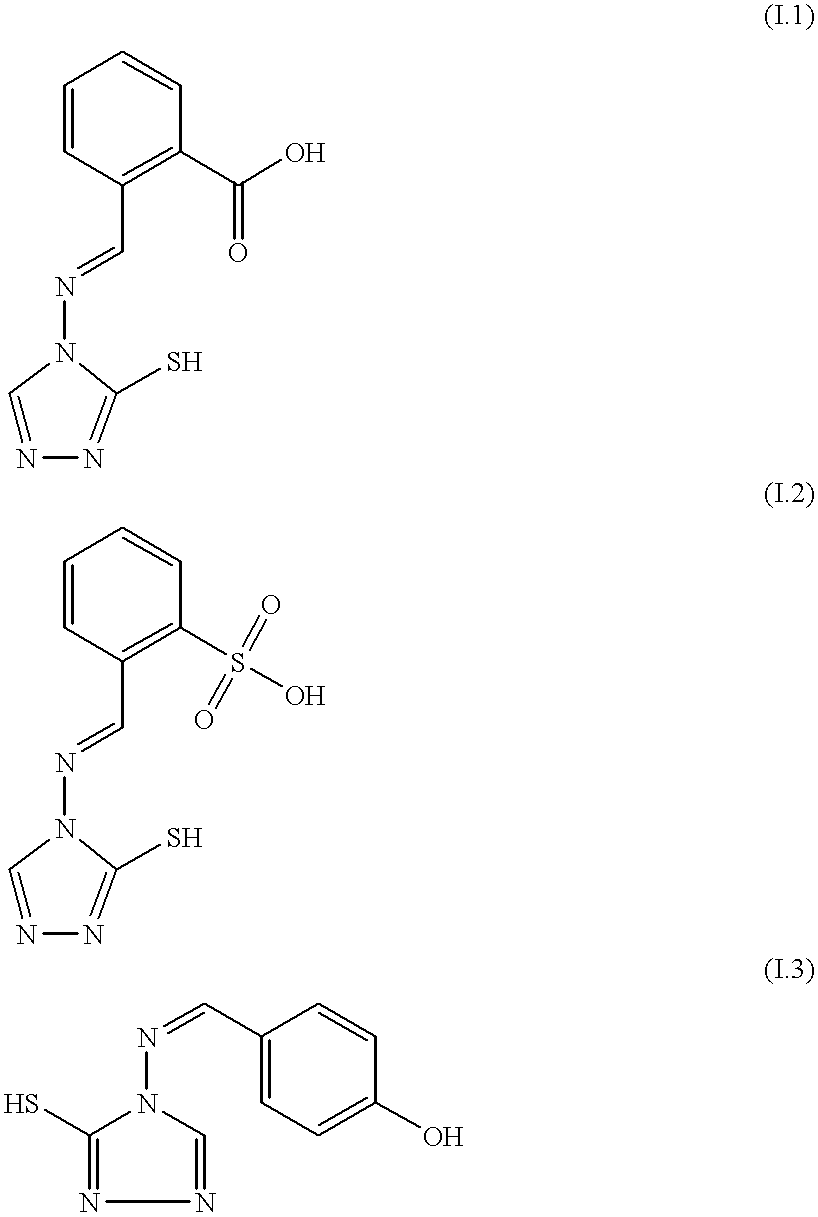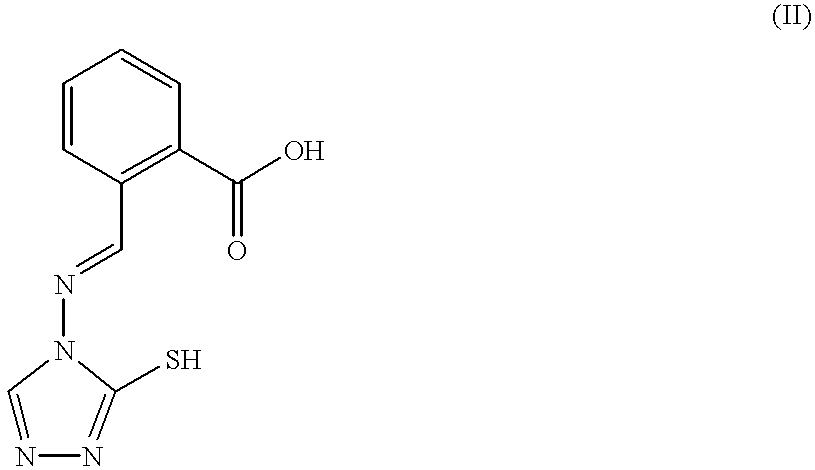Radiographic film material exhibiting increased covering power and "colder" blue-black image tone
a technology of film and image tone, applied in the field of film material exhibiting, can solve the problems of unsatisfactory state-of-the-art, and it is impossible to traverse the existing relationship between improved covering power and worse image tone, and achieve the effect of increasing image tone and covering power
- Summary
- Abstract
- Description
- Claims
- Application Information
AI Technical Summary
Benefits of technology
Problems solved by technology
Method used
Image
Examples
example 1
Preparation of Tabular Emulsion T
To a solution of 5.5 g of an oxidized gelatin in 3 l of demineralized water at 51.degree. C., adjusted to a pH of 2.5 by adding H2SO4, stirred up to a rate of 600 r.p.m., were added by a double jet method aqueous solutions of 1.96 M AgNO3 (hereinafter referred to as A1) and 1.96 M KBr (hereinafter referred to as B1): 16 ml of A1 and 16 ml of B1 were added in a time interval of 30 seconds. During this period, the reaction mixture was maintained at 51.degree. C. 6 minutes later pH was set to a value of 5.0.+-.0.3 and immediately thereafter a solution of 50 g of inert gelatin in 500 ml of demineralized water of 70.degree. C. was added. 6 minutes later B1 was added at a rate of 7.5 ml / min. during 28 seconds, followed during 1 minute by the simultaneous addition of A1 (at a rate of 7.5 ml / min.) and B1 (at a rate of 7.6 ml / min.). In a further double jet addition A1 and B1 were added during 2675 seconds at a linearly increasing rate going from 7.5 up to 15 ...
example 2
A silver bromoiodide emulsion having thin tabular crystals was prepared following an analoguous precipitation scheme as in Example 1 hereinbefore, leading to tabular grains having an average diameter of 0.57 .mu.m and an average thickness of 0.16 .mu.m.
Coating solutions were added as in Example 1 and coating, exposure and processing was also performed in the same way.
Sensitometric parameters, just as in Table 1 have been given hereinafter in the Table 2, except for the data given with respect to the parameters DLT, expressing density latitude (measured between minimum and maximum density) and
Gradation (contrast) "GG2", given as an integer after having multiplied with a factor of 100 the real gradation--contrast--figure as measured between a density of 1.0 and 2.0 above minimum density.
Moreover the same sensitometric data have been measured after having preserved said materials for 12 days at 45.degree. C. and 70% RH.
As becomes clear from the data given in Table 2 improvement of imag...
PUM
 Login to View More
Login to View More Abstract
Description
Claims
Application Information
 Login to View More
Login to View More - R&D
- Intellectual Property
- Life Sciences
- Materials
- Tech Scout
- Unparalleled Data Quality
- Higher Quality Content
- 60% Fewer Hallucinations
Browse by: Latest US Patents, China's latest patents, Technical Efficacy Thesaurus, Application Domain, Technology Topic, Popular Technical Reports.
© 2025 PatSnap. All rights reserved.Legal|Privacy policy|Modern Slavery Act Transparency Statement|Sitemap|About US| Contact US: help@patsnap.com



